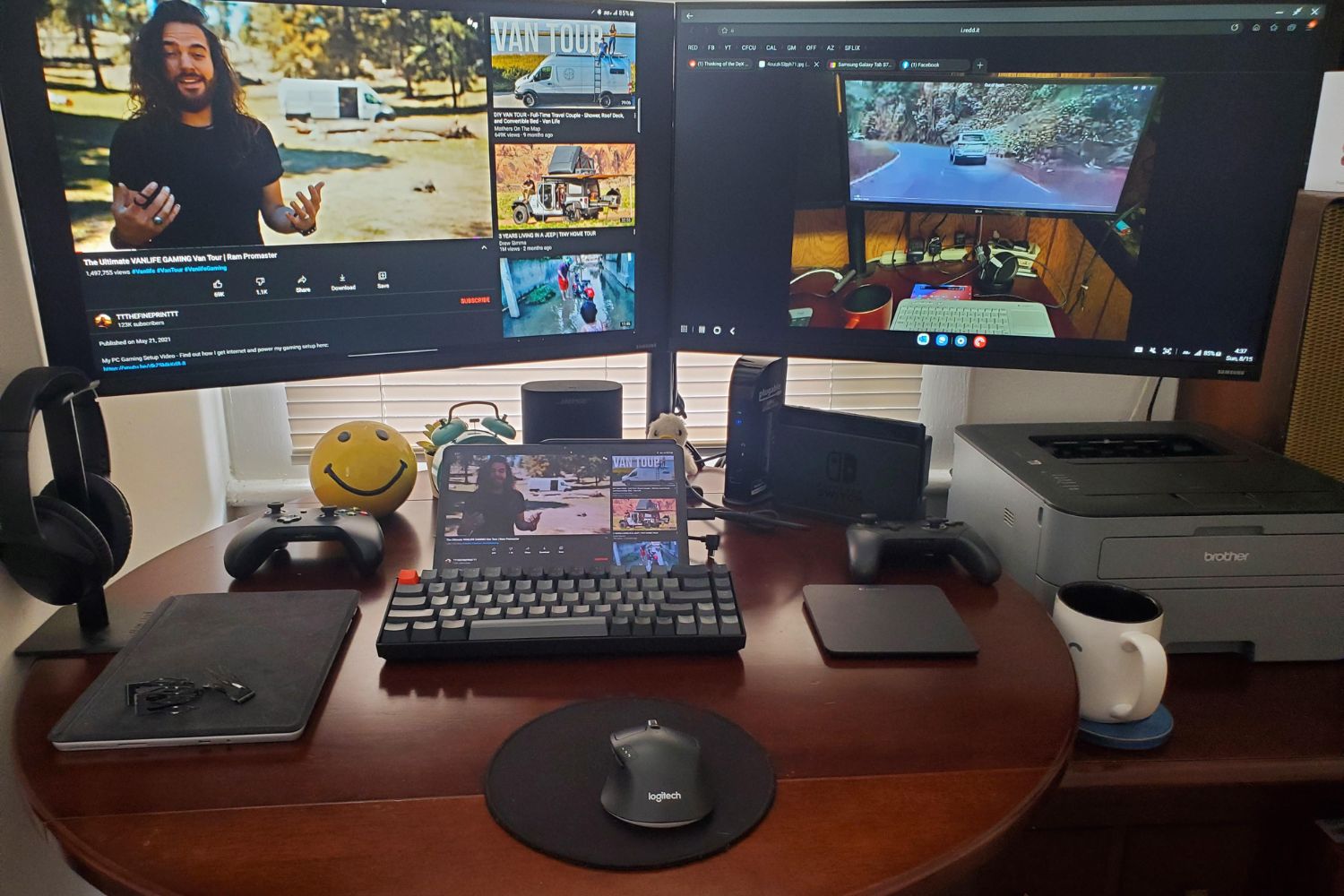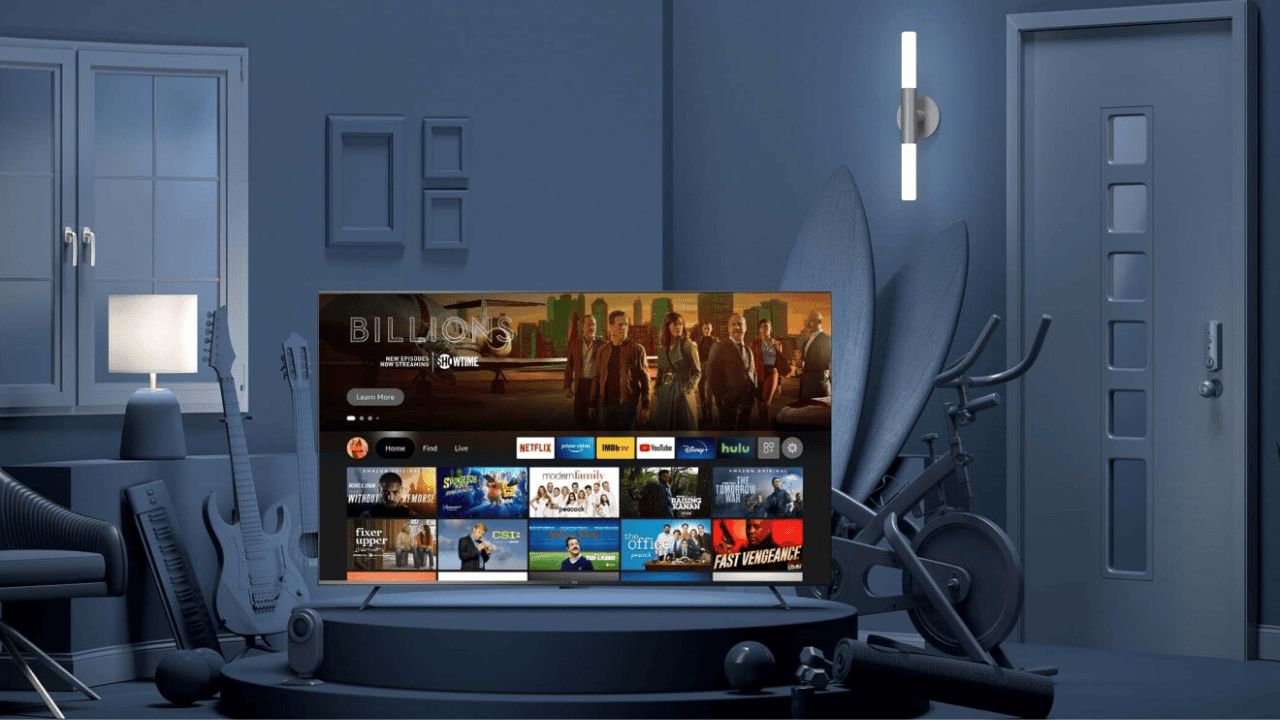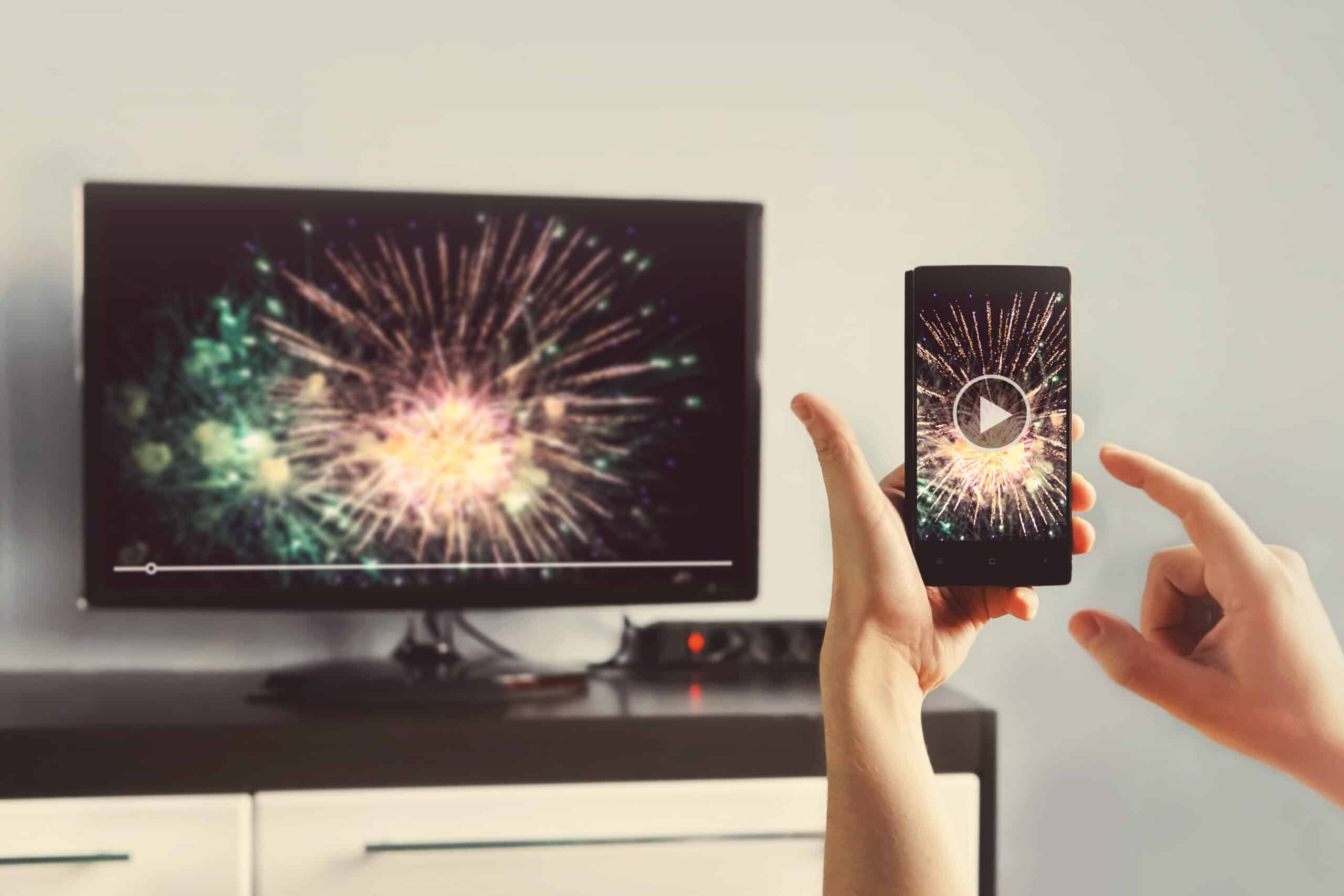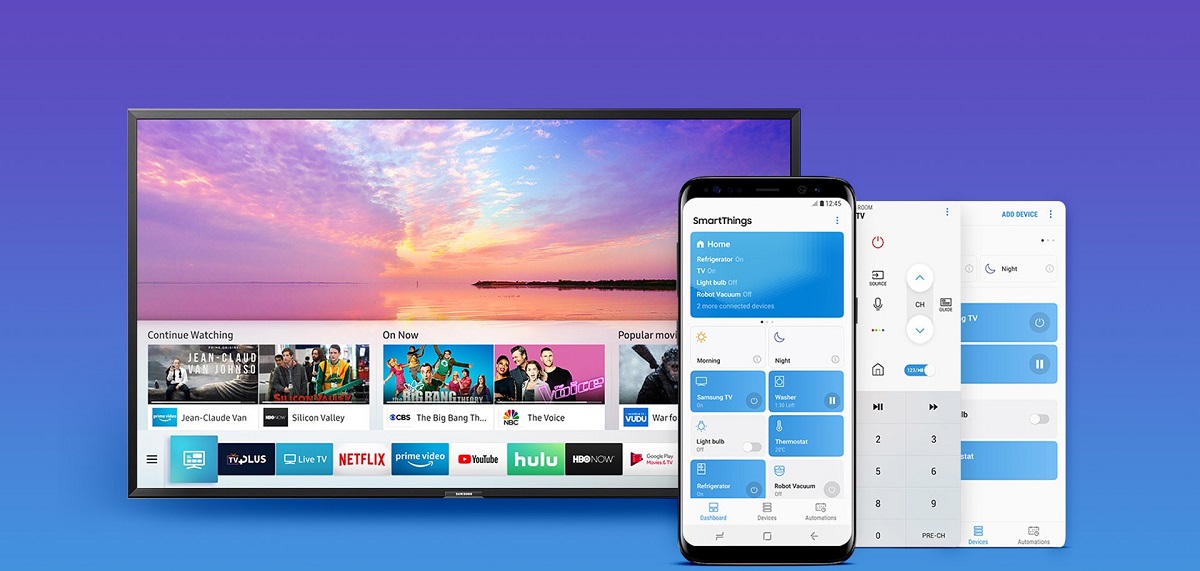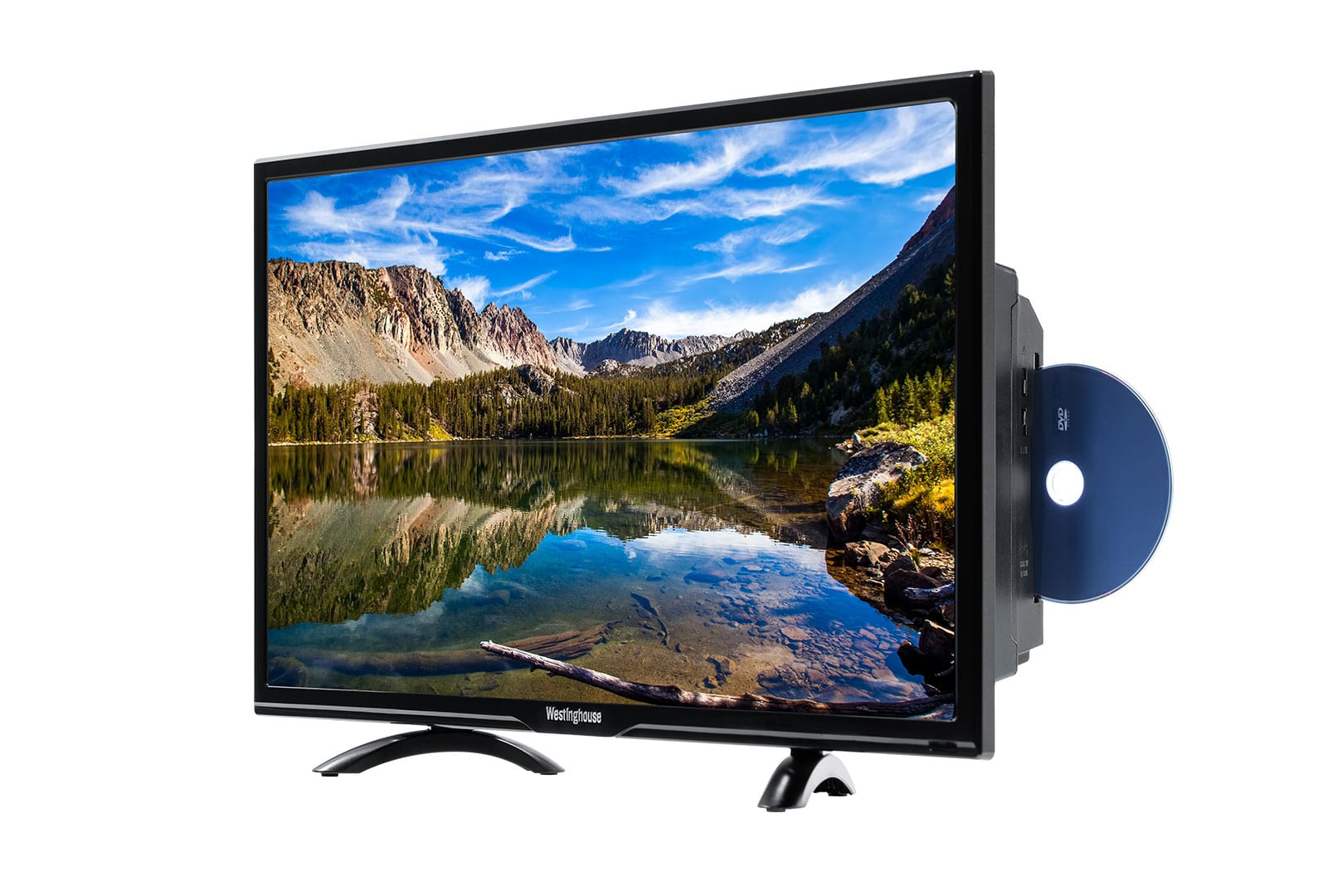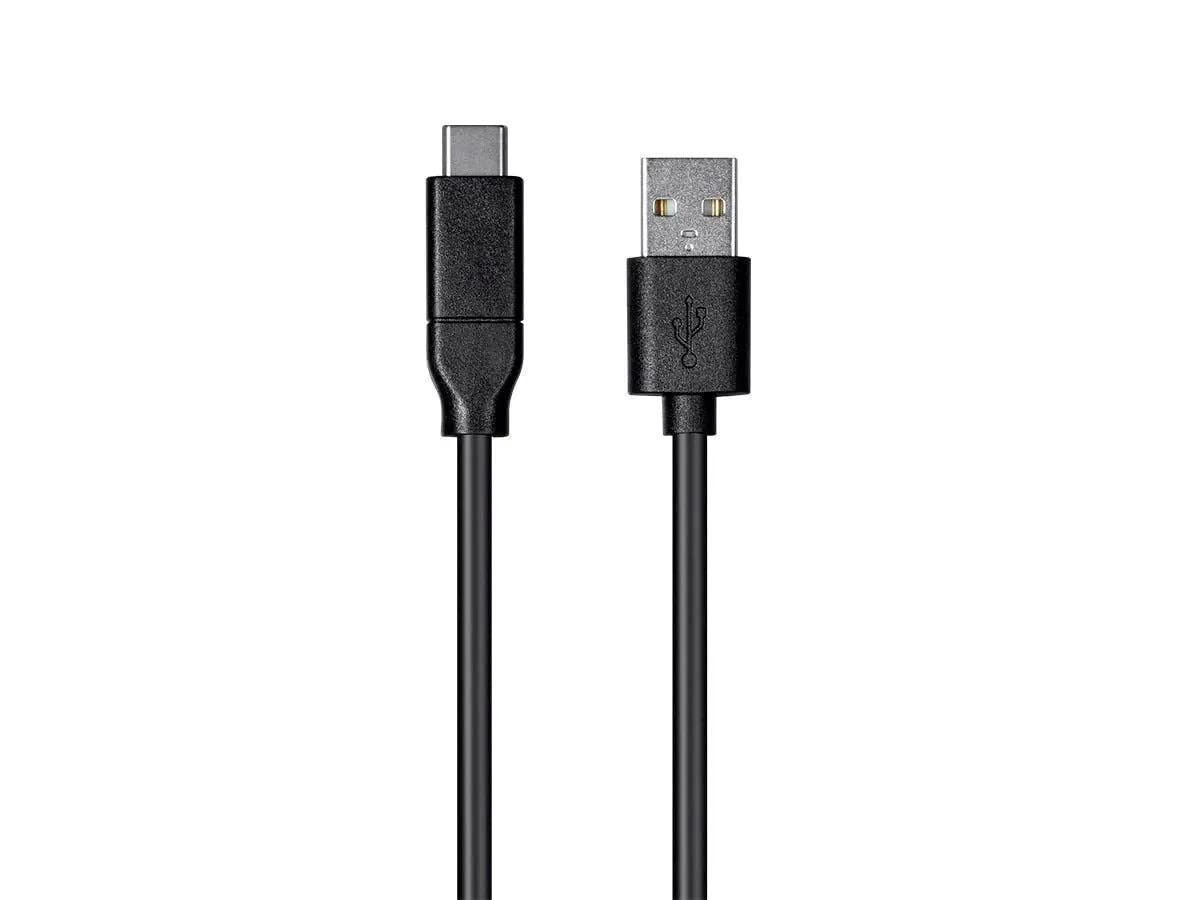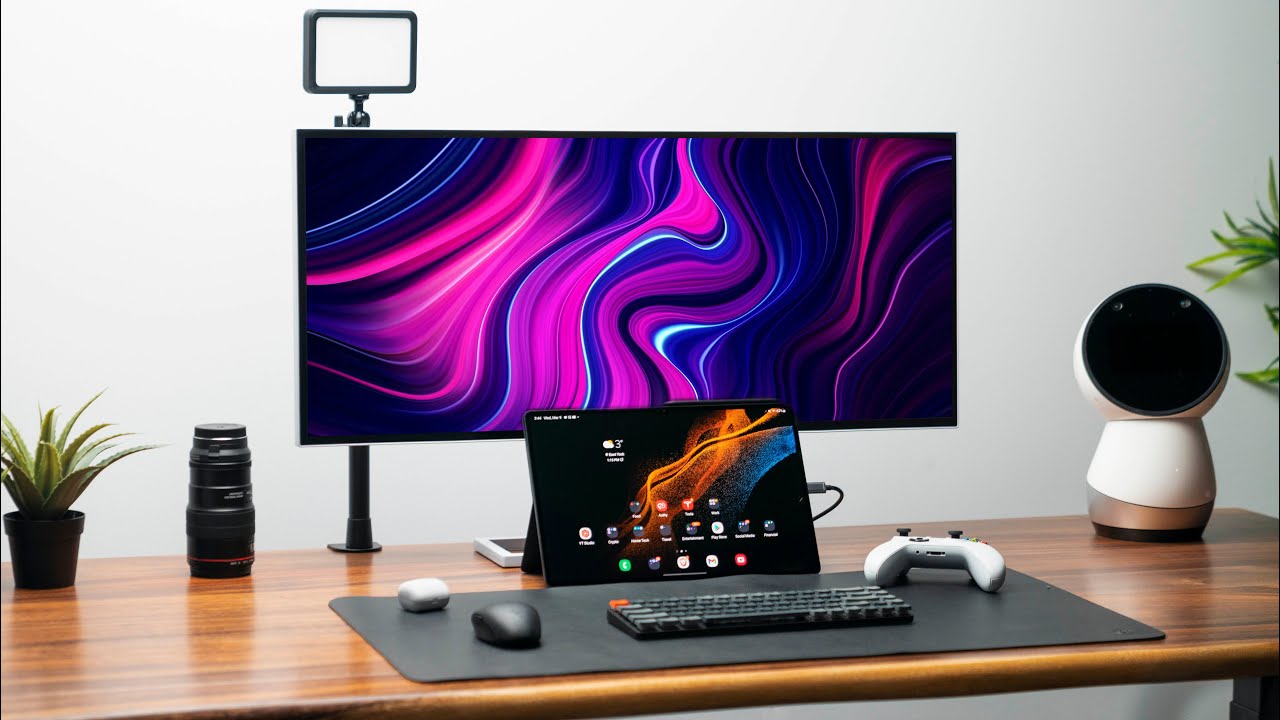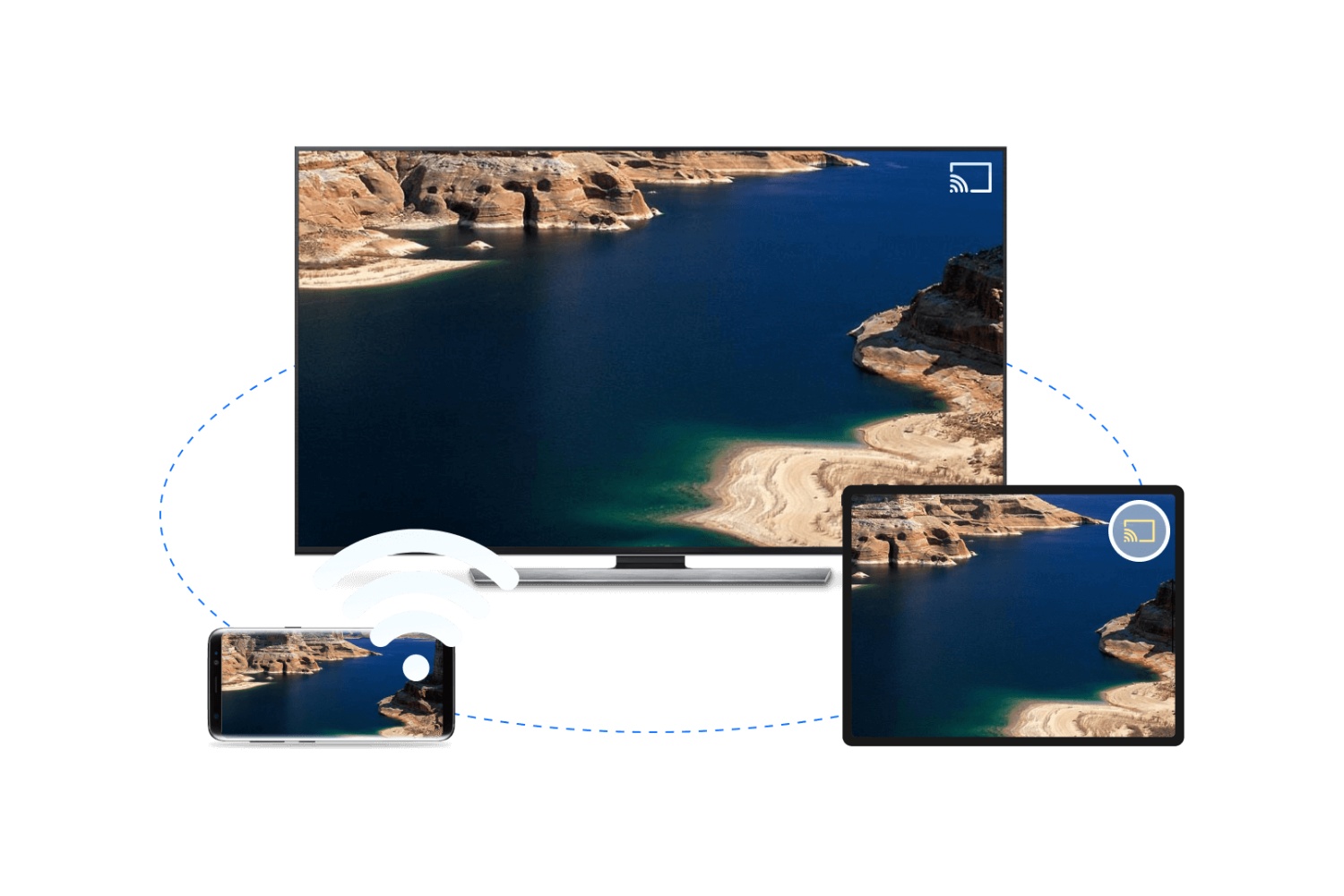Introduction
Are you looking to share your Samsung tablet screen with a larger audience? Whether you want to enjoy your favorite movies and TV shows on the big screen or present a slideshow for work or school, screen sharing from your Samsung tablet to your TV can provide a more immersive viewing experience.
With the advancements in technology, there are several methods available to connect your Samsung tablet to the TV. Whether you prefer a wired connection for a reliable and stable connection or a wireless option for more flexibility and convenience, you have choices that suit your needs.
In this article, we will explore two popular methods of screen sharing from a Samsung tablet to a TV. The first option involves using an HDMI cable, which provides a direct connection between the devices. The second option utilizes a wireless connection, allowing you to mirror your tablet’s screen wirelessly on your TV. We will guide you through the step-by-step process for each option, ensuring that you can easily set up and enjoy screen sharing on your Samsung tablet.
So, whether you want to watch movies, play games, or give presentations, get ready to take your Samsung tablet experience to the next level by sharing your screen on a TV. Let’s dive into the details and unlock the potential of your device!
Connecting your Samsung Tablet to the TV
Before you can start screen sharing from your Samsung tablet to your TV, you need to establish a connection between the two devices. There are two main options you can choose from: using an HDMI cable or a wireless connection. Let’s explore each option in detail.
Option 1: Using a HDMI cable
If you prefer a wired connection for a reliable and high-quality screen sharing experience, using an HDMI cable is the way to go. Here’s how to set it up:
- Check if your Samsung tablet and TV have HDMI ports. Most modern devices have HDMI ports, but it’s always a good idea to double-check.
- Get an HDMI cable that matches the ports on your tablet and TV. HDMI cables come in different lengths, so choose one that suits your needs.
- Connect one end of the HDMI cable to the HDMI port on your tablet and the other end to the HDMI port on your TV.
- Once the cable is connected, switch your TV’s input source to the HDMI input where your tablet is connected.
- Your tablet’s screen should now be mirrored on your TV. You can navigate your tablet and see everything on the big screen.
Option 2: Using a wireless connection
If you prefer a more convenient and flexible method, you can opt for a wireless connection to share your Samsung tablet screen on your TV. Follow these steps to set it up:
- Make sure that both your Samsung tablet and TV are connected to the same Wi-Fi network.
- On your tablet, swipe down from the top of the screen to access the Quick Settings menu.
- Look for the “Screen Mirroring” or “Smart View” option and tap on it.
- A list of available devices will appear. Select your TV from the list.
- A connection will be established, and your tablet’s screen will be mirrored on your TV.
Both these methods provide effective ways to connect your Samsung tablet to your TV for screen sharing purposes. Choose the option that suits your preferences and enjoy an enhanced viewing experience on the big screen!
Option 1: Using a HDMI cable
Using an HDMI cable is a straightforward and reliable method to connect and share your Samsung tablet screen on your TV. It provides high-quality audio and video signals, ensuring a seamless viewing experience. Here’s how you can set it up:
- Check the availability of HDMI ports: First, ensure that both your Samsung tablet and TV have HDMI ports. Most modern devices have HDMI ports, but it’s always a good idea to double-check. If your tablet or TV does not have an HDMI port, you may need to consider other connection options.
- Obtain the right cable: Get an HDMI cable that matches the HDMI ports on your tablet and TV. HDMI cables come in various lengths, so choose one that suits the distance between your devices. It’s recommended to select a high-quality cable to ensure a stable and reliable connection.
- Connect the cable: Once you have the HDMI cable, connect one end of it to the HDMI port on your tablet and the other end to the HDMI port on your TV. Make sure the connections are secure to prevent any disruptions during screen sharing.
- Switch the TV input: After the cable is connected, switch your TV’s input source to the HDMI input where your tablet is connected. Use your TV remote or the controls on the TV itself to change the input source. Note that the name or number assigned to the HDMI input may vary depending on your TV model.
- Enable screen mirroring on your tablet (if needed): Some Samsung tablets have a built-in screen mirroring feature, while others may require you to enable it manually. To check if the screen mirroring feature is available on your tablet, swipe down from the top of the screen to access the Quick Settings menu. Look for the “Screen Mirroring” or “Smart View” option and tap on it to enable it, if necessary.
- Enjoy screen sharing: Once all the above steps are completed, your tablet’s screen should now be mirrored on your TV. You can navigate through your tablet’s interface, open apps, play videos, and display photos, all on the big screen.
With the HDMI cable method, you can enjoy high-quality screen sharing from your Samsung tablet to your TV. It provides a stable and reliable connection, making it an ideal choice for watching movies, playing games, or giving presentations.
Option 2: Using a wireless connection
If you prefer a more convenient and cable-free method to share your Samsung tablet screen on your TV, using a wireless connection is an excellent choice. This option allows you to mirror your tablet’s screen wirelessly, providing flexibility and ease of use. Here’s how you can set it up:
- Ensure Wi-Fi connectivity: Before you begin, make sure that both your Samsung tablet and TV are connected to the same Wi-Fi network. This is essential for establishing a wireless connection between the two devices.
- Access the Quick Settings menu: On your Samsung tablet, swipe down from the top of the screen to access the Quick Settings menu. This menu allows you to quickly modify various device settings.
- Enable screen mirroring: Look for the “Screen Mirroring” or “Smart View” option in the Quick Settings menu and tap on it. This will initiate the screen mirroring process on your tablet.
- Select your TV: After enabling screen mirroring, a list of available devices will appear on your tablet’s screen. Look for and select your TV from the list. If your TV does not appear, ensure that it is powered on, connected to the Wi-Fi network, and supports screen mirroring.
- Establish the wireless connection: Once you select your TV, the tablet will establish a connection with the TV. This process may take a few moments, so please be patient.
- Enjoy wireless screen sharing: Once the connection is established, your Samsung tablet’s screen will be mirrored on your TV. You can now navigate through your tablet’s interface, open apps, play videos, and view photos on the larger TV screen.
Using a wireless connection provides flexibility, allowing you to comfortably control your tablet from a distance while enjoying the content on the big screen. It’s an excellent option for streaming videos, sharing photos, or even conducting presentations without the hassle of cables.
Step 1: Make sure your TV and tablet are connected to the same Wi-Fi network
Before you can start screen sharing from your Samsung tablet to your TV wirelessly, it is essential to ensure that both devices are connected to the same Wi-Fi network. This step is crucial as it allows the tablet and TV to communicate with each other over the network. Follow these guidelines to complete this step:
- Check Wi-Fi connectivity: Ensure that your TV and Samsung tablet are connected to a Wi-Fi network. Go to the settings of both devices and verify the Wi-Fi connection status. If they are not connected or connected to different networks, proceed to connect them to the same Wi-Fi network.
- Connect your Samsung tablet to Wi-Fi: On your tablet, open the settings menu and locate the Wi-Fi section. Tap on it to access the available Wi-Fi networks. Choose the network you want to connect to and enter the password, if required. Once connected, your tablet will show a Wi-Fi signal icon in the notification bar, indicating a successful connection.
- Connect your TV to Wi-Fi: Depending on the TV model, the process of connecting to Wi-Fi may vary. However, most modern smart TVs have a similar procedure. Using your TV remote, navigate to the settings menu and look for the network or Wi-Fi settings. Select your Wi-Fi network from the list of available networks and enter the password, if prompted. Once connected, your TV will display a Wi-Fi symbol or status indicator.
- Verify the connection: After connecting both devices to the same Wi-Fi network, double-check that they are indeed on the same network. You can do this by comparing the SSID (name) of the Wi-Fi network displayed on your tablet and TV. They should match identically.
By ensuring that your Samsung tablet and TV are connected to the same Wi-Fi network, you establish the foundation for seamless wireless screen sharing. This step ensures that the devices can communicate effectively, enabling you to mirror your tablet’s screen on the TV and enjoy your favorite content on the larger display.
Step 2: Enable screen mirroring on your tablet
In order to share your Samsung tablet screen wirelessly with your TV, you need to enable the screen mirroring feature on your tablet. This step allows your tablet to transmit its display to the TV over the Wi-Fi network. Follow these instructions to enable screen mirroring on your tablet:
- Swipe down from the top of the tablet screen to open the Quick Settings menu. This menu provides convenient access to various device settings.
- Look for the “Screen Mirroring” or “Smart View” option in the Quick Settings menu. The name may vary depending on your tablet model and software version.
- Tap on the “Screen Mirroring” or “Smart View” option to enable it.
- Your tablet will now start searching for available devices to connect to. It may take a few moments to populate the list of available devices.
- Once the list of available devices appears, select your TV from the list. This will initiate the screen mirroring process.
- Depending on your tablet, you may be prompted to enter a PIN or confirm the connection on the TV. Follow the on-screen instructions to complete the connection process.
- Once the connection is established, your tablet’s screen will be mirrored on your TV, and you can view the same content on both devices.
Enabling screen mirroring on your Samsung tablet allows you to seamlessly share your screen wirelessly with your TV. This feature is convenient for various activities such as streaming videos, playing games, or showcasing presentations on a larger display. Enjoy the flexibility and convenience of wireless screen sharing with your Samsung tablet and TV!
Step 3: Enable screen mirroring on your TV
In order to successfully mirror your Samsung tablet’s screen on your TV, you need to enable the screen mirroring feature on your TV. This step allows the TV to receive and display the screen content from your tablet. Follow these instructions to enable screen mirroring on your TV:
- Ensure that your TV is powered on and connected to the same Wi-Fi network as your tablet. This is essential for the devices to communicate with each other.
- Using your TV remote, navigate to the settings menu. The location of the settings menu may vary depending on your TV model, but it is typically accessed by pressing the “Menu” or “Settings” button on the remote.
- In the settings menu, look for the “Screen Mirroring” or “Mirroring” option. It may also be labeled as “Wireless Display” or “AllShare Cast”.
- Select the “Screen Mirroring” or relevant option to enable it. This will activate the TV’s screen mirroring feature and make it discoverable to other devices.
- Your TV will now start searching for available devices to connect to. It may take a few moments to populate the list of available devices.
- Meanwhile, ensure that the screen mirroring feature is enabled on your Samsung tablet, as mentioned in the previous step.
- Once the list of available devices appears on your TV, select your tablet from the list. This will initiate the connection process between your tablet and TV.
- You may be prompted to confirm the connection or enter a PIN. Follow the on-screen instructions and enter the required details, if necessary.
- Once the connection is established, your Samsung tablet’s screen will be mirrored on your TV, and you can see the same content on both devices.
By enabling screen mirroring on your TV, you open the doors to wireless screen sharing from your Samsung tablet. This step ensures that your TV is ready to receive and display the screen content from your tablet, providing you with a larger and more immersive viewing experience. Enjoy the convenience of screen mirroring and explore the possibilities it offers!
Step 4: Connect your tablet to the TV wirelessly
After enabling screen mirroring on both your Samsung tablet and TV, it’s time to establish the wireless connection between the two devices. This step allows your tablet to seamlessly transmit its display to the TV wirelessly. Follow these instructions to connect your tablet to the TV:
- Ensure that both your tablet and TV are powered on and connected to the same Wi-Fi network. This is crucial for them to communicate with each other.
- On your tablet, access the Quick Settings menu by swiping down from the top of the screen.
- Look for the “Screen Mirroring” or “Smart View” option in the Quick Settings menu and tap on it.
- A list of available devices will appear on your tablet’s screen.
- Locate and select your TV from the list of available devices. It may be displayed with the TV’s name or model number.
- Your tablet will now establish the wireless connection with the TV. This may take a few moments, so please be patient.
- Once the connection is established, your tablet’s screen will be mirrored on your TV. You will see the same content on both devices.
By connecting your Samsung tablet to your TV wirelessly, you can enjoy the convenience of streaming your tablet’s display on a larger screen. Whether you want to watch videos, showcase photos, or play games, a wireless connection provides flexibility and freedom of movement. Immerse yourself in the content and enhance your viewing experience with the seamless connection between your tablet and TV.
Step 5: Adjusting the screen resolution and orientation
Once you have successfully connected your Samsung tablet to your TV and the screen mirroring is established, you may need to adjust the screen resolution and orientation to optimize your viewing experience. Here’s how you can make these adjustments:
- Access the settings on your tablet: Depending on your tablet model and software version, the settings menu may have different names or icons. Locate the settings app on your tablet and open it.
- Adjust the screen resolution: In the settings menu, look for the display settings or screen settings. Tap on it to access the display options. Here, you can adjust the screen resolution to match your TV’s resolution for optimal clarity and quality. Select the desired resolution from the available options.
- Modify the screen orientation: If the orientation of your tablet’s screen does not match the orientation of your TV, you can adjust it in the settings. Look for the display or screen settings that allow you to change the screen orientation. Typically, you can choose between portrait and landscape modes. Select the desired orientation that matches your TV’s display.
- Make additional display adjustments (if needed): Depending on your preferences and the specific requirements of your TV, you may have additional options to adjust the aspect ratio, brightness, contrast, or other display settings. Explore the display settings menu and make further adjustments if necessary.
By adjusting the screen resolution and orientation on your tablet, you can optimize the visual experience when mirroring your tablet’s screen on your TV. Adjusting the resolution ensures that the content appears sharp and clear, while modifying the orientation ensures that the display is correctly aligned with your TV’s screen. Take the time to explore the display settings and make the necessary adjustments to enhance your overall viewing experience.
Conclusion
Screen sharing from your Samsung tablet to your TV opens up a whole new world of possibilities for entertainment, productivity, and collaboration. By following the steps outlined in this guide, you can easily connect your tablet to your TV and enjoy an immersive viewing experience on a larger screen.
Whether you choose the wired option of using an HDMI cable or the convenience of a wireless connection, both methods offer their own benefits. Using an HDMI cable provides a reliable and high-quality connection, perfect for watching movies or giving presentations. On the other hand, the wireless option allows for greater flexibility and freedom, making it ideal for streaming videos or sharing photos with ease.
Remember to ensure that both your tablet and TV are connected to the same Wi-Fi network before attempting to screen share wirelessly. Enabling screen mirroring on both devices and establishing the connection will pave the way for seamless transmission of your tablet’s screen content to the TV.
Once connected, don’t forget to adjust the screen resolution and orientation to optimize your viewing experience. Fine-tuning these settings will ensure that the content appears crisp, clear, and properly aligned with your TV’s display.
So, whether you want to enjoy a movie night with friends, share a multimedia presentation at work, or simply showcase your favorite photos on a larger screen, screen sharing from your Samsung tablet to your TV is a fantastic option. Follow the steps outlined in this guide, and unlock the full potential of your devices for an enhanced viewing experience.
Now, grab your Samsung tablet, connect it to your TV, and get ready to immerse yourself in a whole new level of entertainment and productivity!







